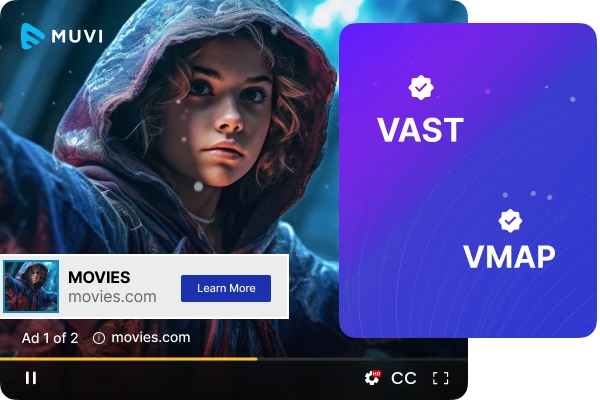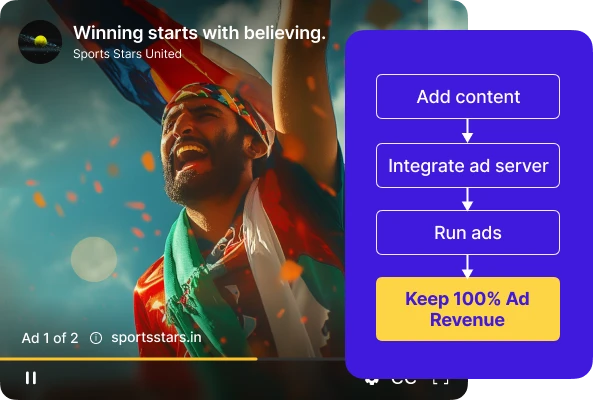AVOD (Ad-Supported Video on Demand) is a streaming monetization model where users can watch content for free, and revenue is generated through advertisements. Instead of paying a subscription or rental fee, viewers watch pre-roll, mid-roll, or post-roll ads, and the platform or content owner earns money from the advertisers based on impressions, clicks, or completed views.
To integrate AVOD, a streaming platform typically connects an ad server (e.g., Google Ad Manager, OpenX) or uses VAST/VMAP tags to deliver ads during playback. The platform defines ad placements (pre-roll, mid-roll, post-roll) and targeting rules. Once integrated, the video player requests ads from the ad server and plays them automatically during the content based on the defined rules, earning revenue from ad impressions.
AVOD enables content creators to monetize without charging viewers directly, removing the paywall barrier and increasing reach. The revenue potential grows as viewership grows, making it suitable for creators with large or rapidly growing audiences. It also supports multiple ad formats and dynamic targeting, which can increase earnings compared to fixed content sales.
AVOD is supported on major streaming platforms across web, mobile, Smart TVs, and CTV devices, provided the video player supports advertising standards like VAST and VMAP and can integrate with leading ad servers. Most streaming ecosystems — including custom OTT platforms — can run AVOD as long as they have ad-server compatibility and the ability to place and trigger ads within video playback.
AVOD performance is measured using metrics such as ad impressions, CPM (cost per mille), click-through rate (CTR), ad completion rate, fill rate, revenue per user, and total ad revenue. Advanced platforms also track viewer engagement and audience segments to optimize ad placement and targeting, helping maximize monetization efficiency.





















